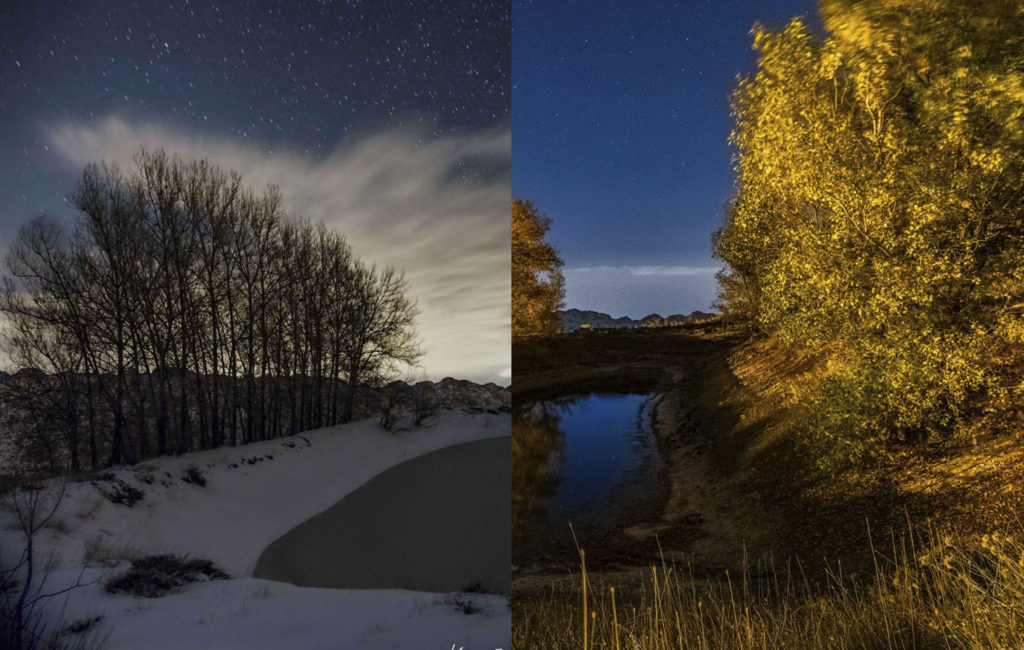
Created in 2003 by high-school student Jennifer Barlow, International Dark Sky Week has grown to become a worldwide event.
Each year it is held in April, from Sunday to Sunday, the week of the new moon – when skies are the darkest.
This year’s celebrations begin on Sunday, April 19, and run through Sunday, April 26, 2020.
In explaining why she started the week, Barlow said
“I want people to be able to see the wonder of the night sky without the effects of light pollution. The universe is our view into our past and our vision into the future… I want to help preserve its wonder.”
International Dark Sky Week draws attention to the problems associated with light pollution and promotes simple solutions available to mitigate it.
Light Pollution & Dark Skies in Lebanon
Knowing Lebanon’s surface area is 10452 km2 with more than 6.8 million in population which makes the population density around 582 people per square kilometer (source). This earns the country a ranking of 10th most densely populated country in the world.
The growth of that population density is affecting the whole country surface with more construction sites, making the whole country one populated city.
This increase in population and population density is affecting nowadays mainly the mountainous areas since the main cities are overcrowded.
In the last ten years we have witnessed the growth of most mountainous villages in population and even the space constructed, leading to more new streets and roads and to more street lights and more light polluted areas.
Below two different photos to show the difference in light pollution 2015 and 2018.


Light pollution is increasing with the growth of construction sites and the huge growth of the population number from year to another…
Dark skies are diminishing year after year.
What our ancestors experienced as night skies brimming with stars that inspired science, religion, philosophy; such skies are unknown now to the newest generations, millions of people across the globe cannot see the Milky Way from their own homes.
On another note, the increase of light pollution is not only affecting the night skies, it affects the nocturnal life and animals such as the migrating birds, sea turtles hatching…
Even humans are not immune to the negative effects of light in their nighttime spaces. Excessive exposure to artificial light at night, particularly blue light, has been linked to increased risks for obesity, depression, sleep disorders, diabetes and breast cancer.
The main challenge regarding this matter, is how to convince our Lebanese society and its authorities about the risks coming from such pollution, since the country is facing a great cut in power, replaced by private generators (once the governmental power is down), as well as solar panel systems, which also power the street lights.
In some countries they worked on creating some free light polluted park.
International Dark Sky Park (IDSP) is a land possessing an exceptional or distinguished quality of starry nights and a nocturnal environment that is specifically protected for its scientific, natural, educational, cultural heritage, and/or public enjoyment. The land may be publicly owned, or privately owned provided that the landowner(s) consent to the right of permanent, ongoing public access to specific areas included in the IDA designation. You can see some of these parks:
• Albanyà (Spain)
• Antelope Island State Park (U.S.)
• Anza-Borrego Desert State Park (U.S.)
• Arches National Park (U.S.)
• Ballycroy National Park and Wild Nephin Wilderness (Ireland)
• Big Bend National Park (U.S.)
• Big Bend Ranch State Park (U.S.)
What we can do?
The good news is that light pollution is reversible and its solutions are immediate, and simple: Shield outdoor lighting, or at least angle it downward, to minimize “light trespass” beyond your property lines. Use light only when and where needed.
Motion detectors and timers can help. Use only the amount of light required for the task at hand.
As a community working on spreading awareness about the risks and the damages caused by light pollution and working with the authorities creating some light free parks or maybe to create a yearly event free of night lights.


